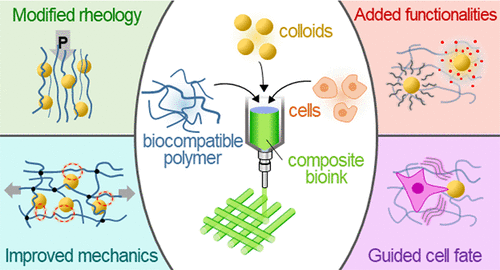The development of extrusion-based bioprinting for tissue engineering
is conditioned by the design of bioinks displaying adequate printability, shape
stability, and postprinting bioactivity. In this context, simple bioink formulations,
made of cells supported by a polymer matrix, often lack the necessary versatility. To
address this issue, intense research work has been focused on introducing colloidal
particles into the ink formulation. By creating weak cross-links between polymer
chains, added particles modify the rheology and mechanical behavior of bioinks to
improve their printability and structural integrity. Additionally, nano- and
microscopic particles display composition- and structure-specific properties that
can affect the cellular behavior and enhance the formation of tissue within the
printed material. This Review offers a comprehensive picture of the role of colloids in bioprinting from a physicochemical and biological perspective. As such, it provides guidance on devising adaptable bioinks for the fabrication of biomimetic tissues.
Our review is available here:
https://pubs.acs.org/doi/10.1021/acs.biomac.0c00305

